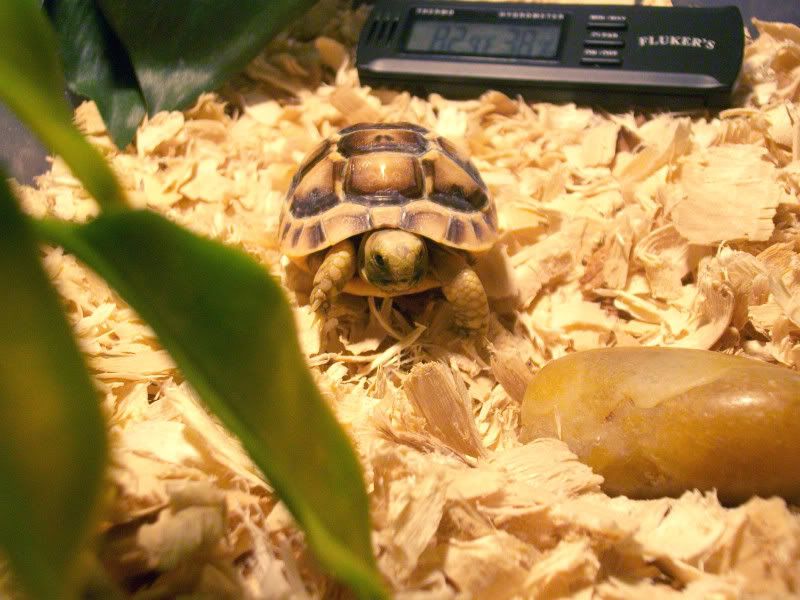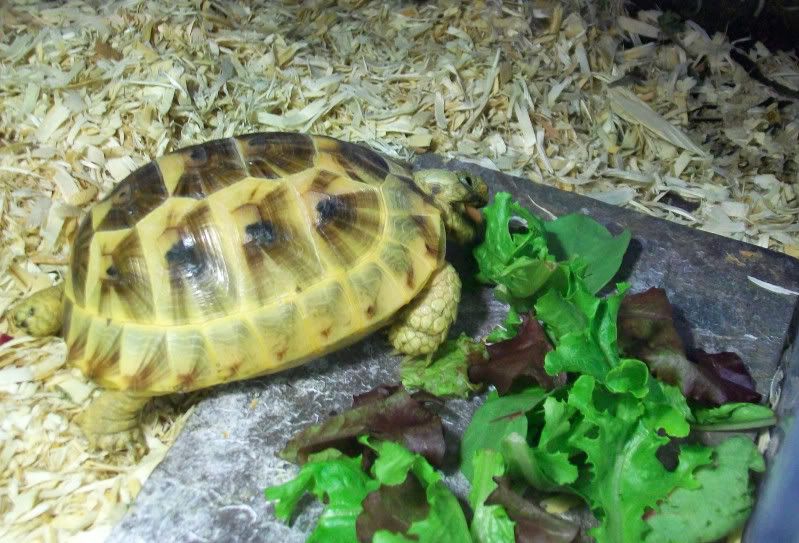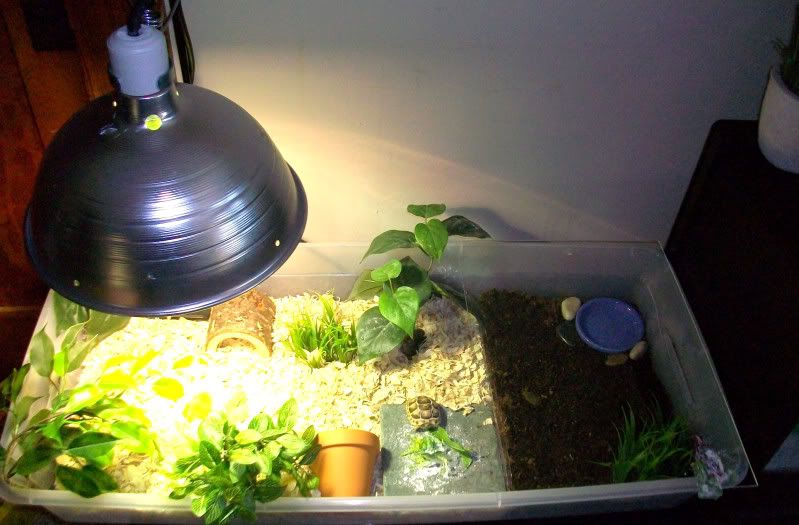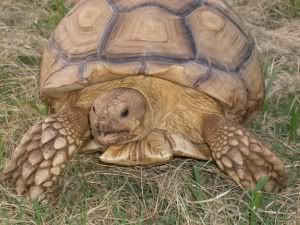Keep it up Tom!!! Great Q? Terry O!!!
The following may surprise - hopefully 'enlightens' - many.
It was not that long ago that I also was frustrated, confused and doubtful. I'll do my best to tell my story as complete as possible.. of course with corresponding pics - some are actually "scanned" from prints [ before digital! ]
I agree in part with what Richard stated about "over-doing" the soaks and spraying, etc. I also believe that the odds of getting 'pyramiding' from/after "over-doing" is probly 328,963,1247,047,194,495,491 to 1.
To answer Terry O's Q? -
Terry it was really like your ability to visualize anything pertaining to outdoor landscaping, enclosures, vivariums, etc.! It just comes/came naturally - maybe like that's what we do?
I simply observed the situation/facts/results present.. let them incubate for a short while and the 'conclusion' hatched!
About Redfoots and Leopards.. they don't co-habitate [ make note of DATES in lower right of some of the pics.. from the first camera that was set to embed them for this very reason apparently ]
Look who's coming to dinner! Romaine/Kale? [ it gets worse............ ]
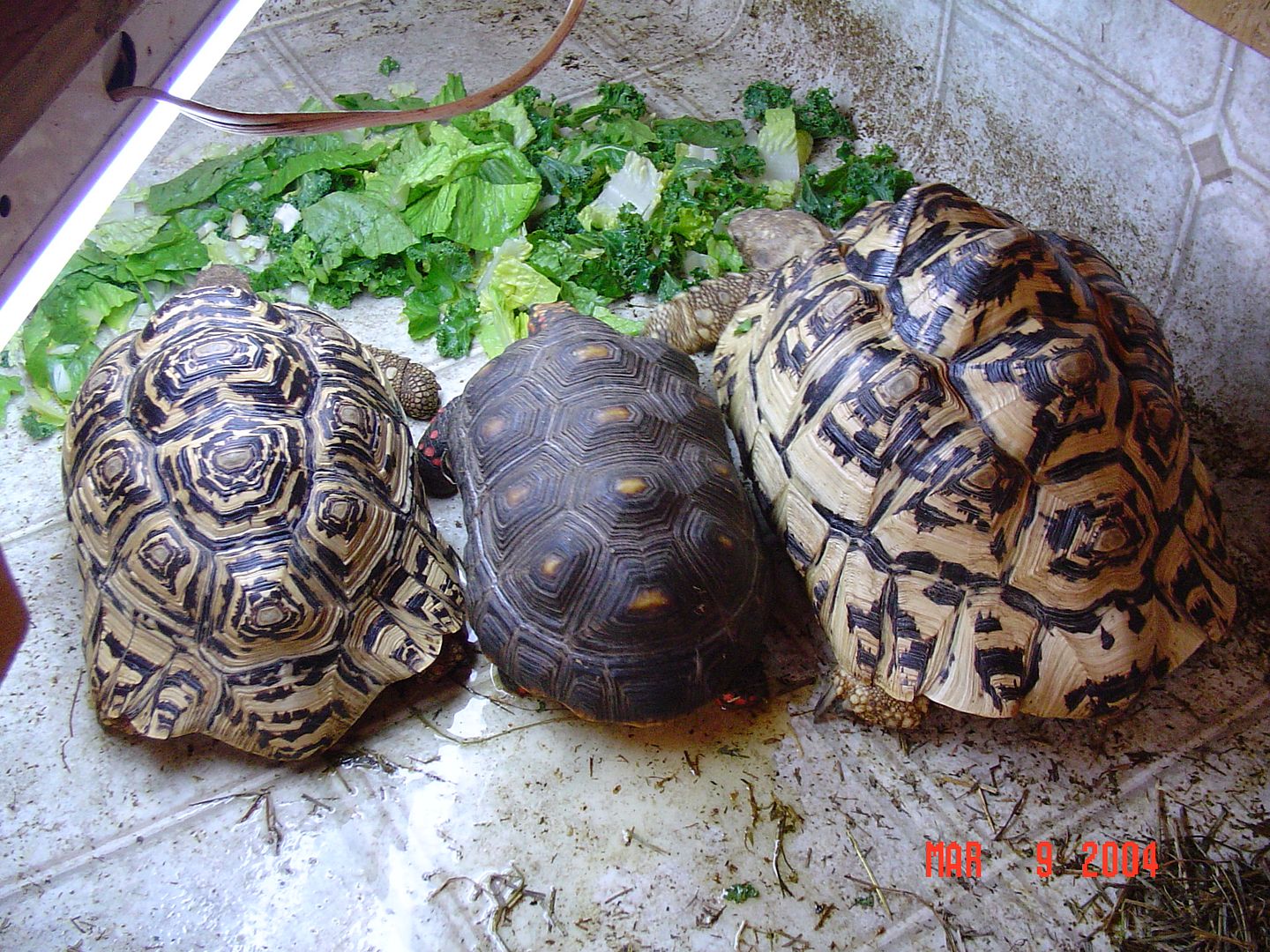
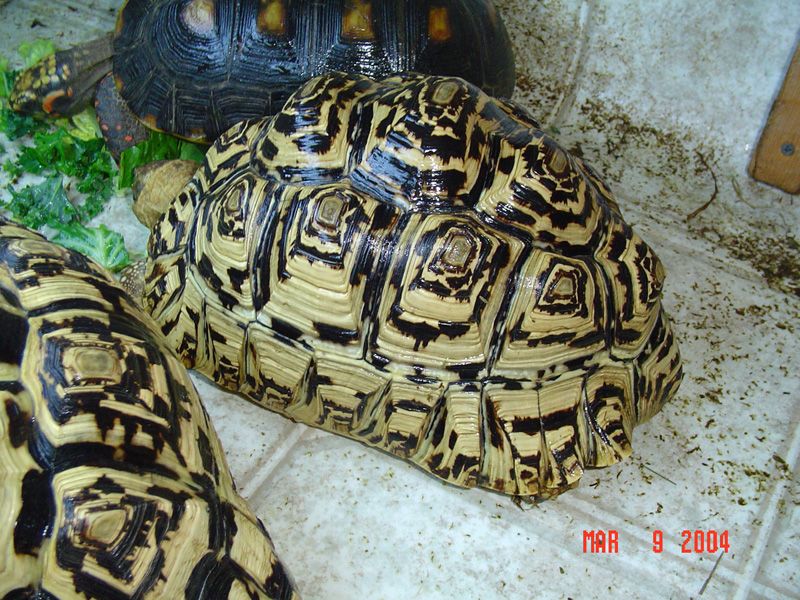
The redfoots were '98 CH that grew up quite bumpy -
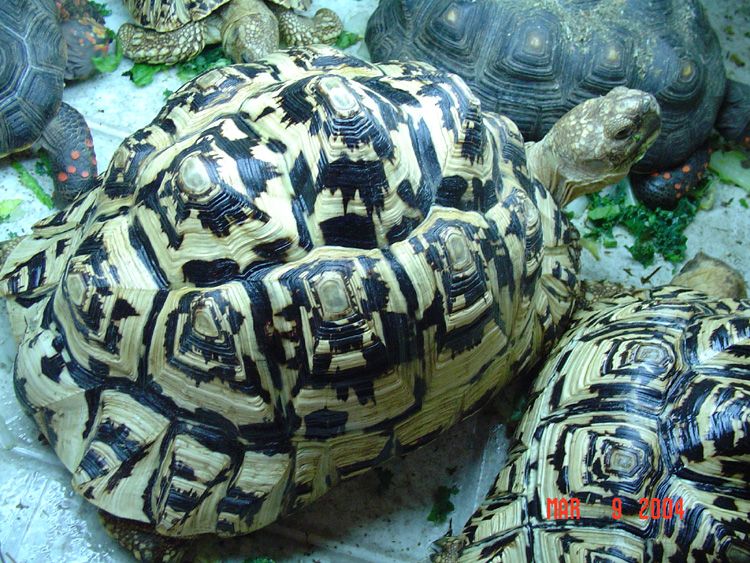
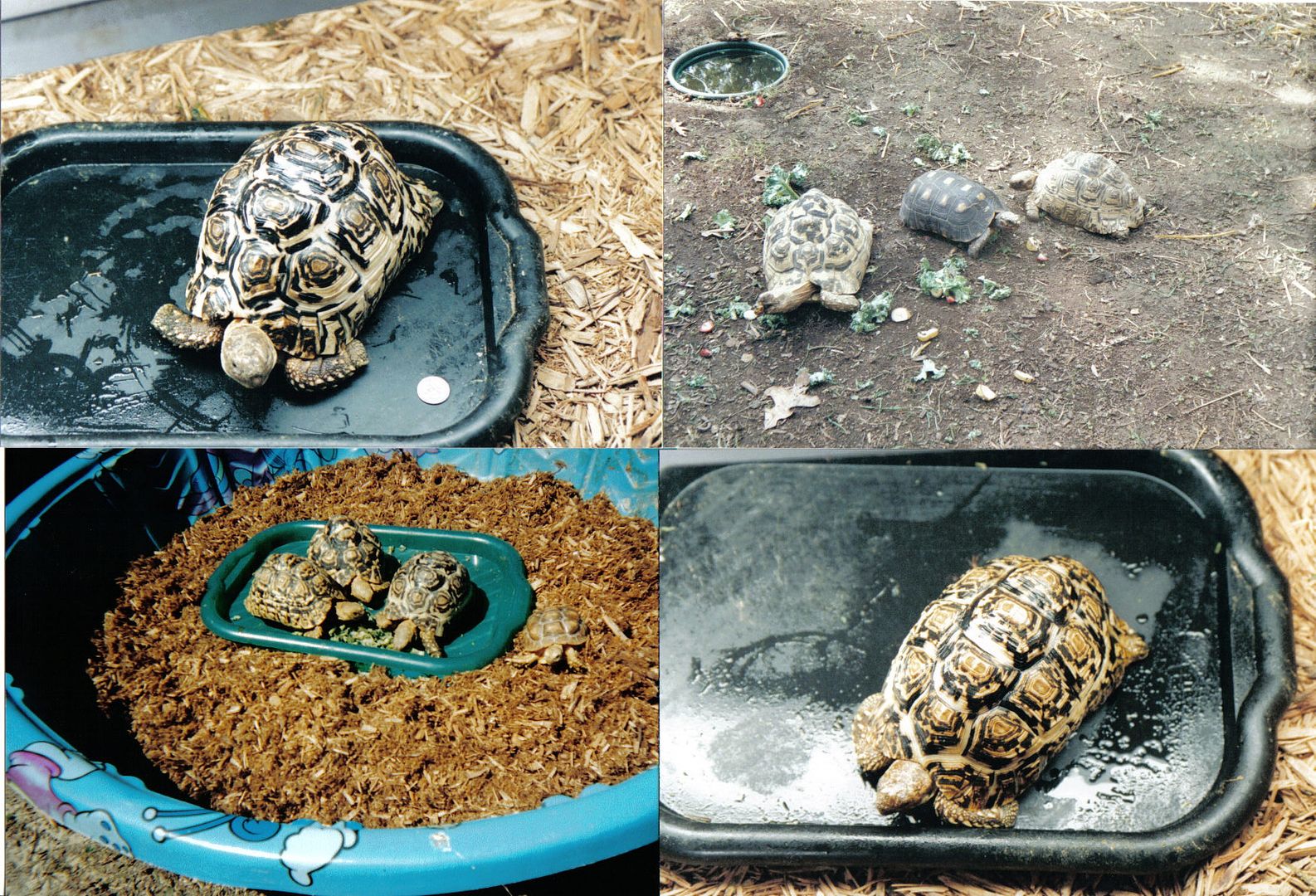
Shown above at various sizes.. they were raised-up during very warm/humid seasons together outside -

Don't tell me about how you guys have done it wrong!
The Redfoots were fed no fruit or protein.. kept dry inside on hay for the Leopards and never "misted"!
The Leopards were subjected to high humidity here in TN.
They were all very small when housed together.. 4" CH redfoots and 4" WC leopards ------- YIKES!!!!!
I saw 'bumpy' Flat-tails ( a spider ssp. ) at the ZOO -

They saw remarkable results after providing "humid-hides" for their hatchlings!
I have "Mediterranean" breeder friends face the same dilemma, etc. Same results.
And I did speak with Richard Fife on the phone.. in early '03 maybe { not sure } I think I was asking him about sexing the Leopards.. and we may or may not have discussed redfoots at that time.
No humid hide for these guys -
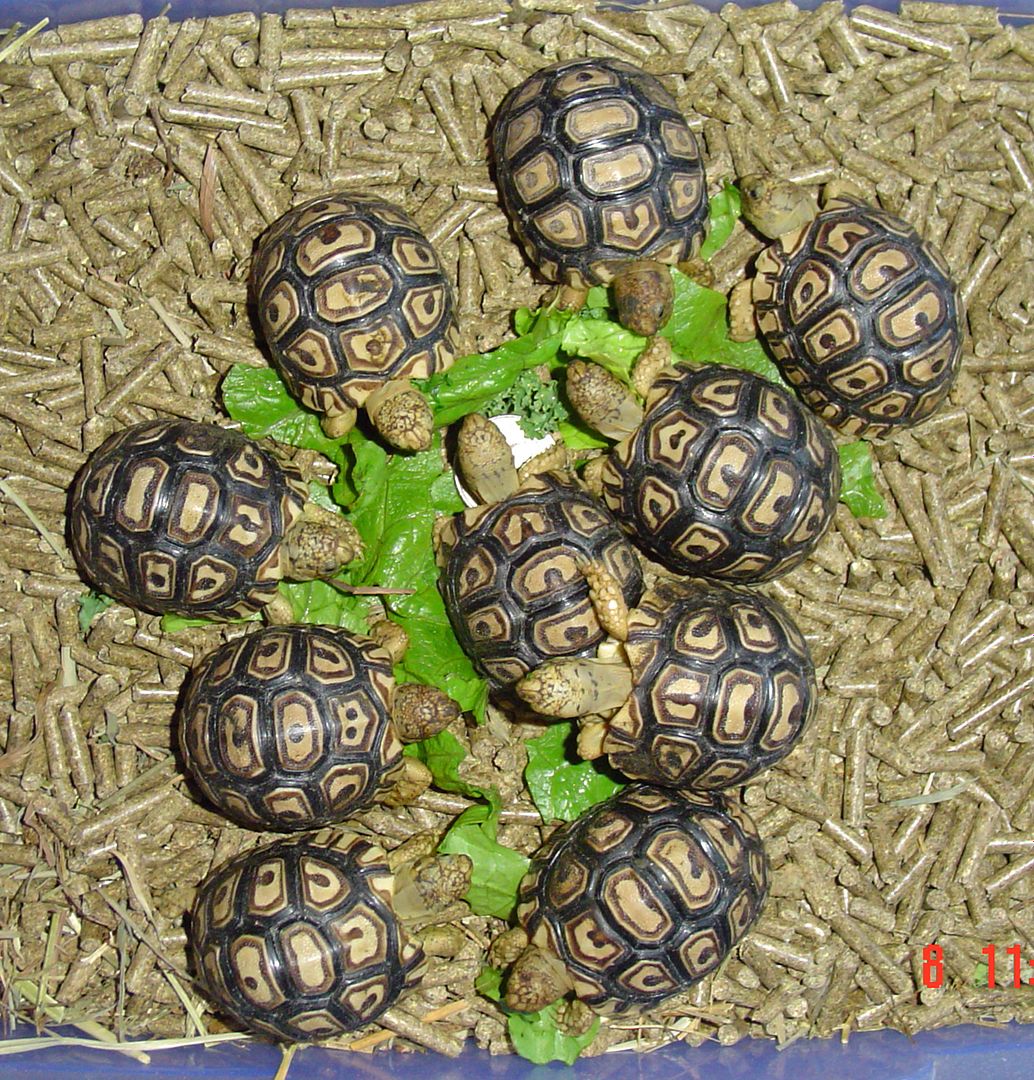
It only took a few months..
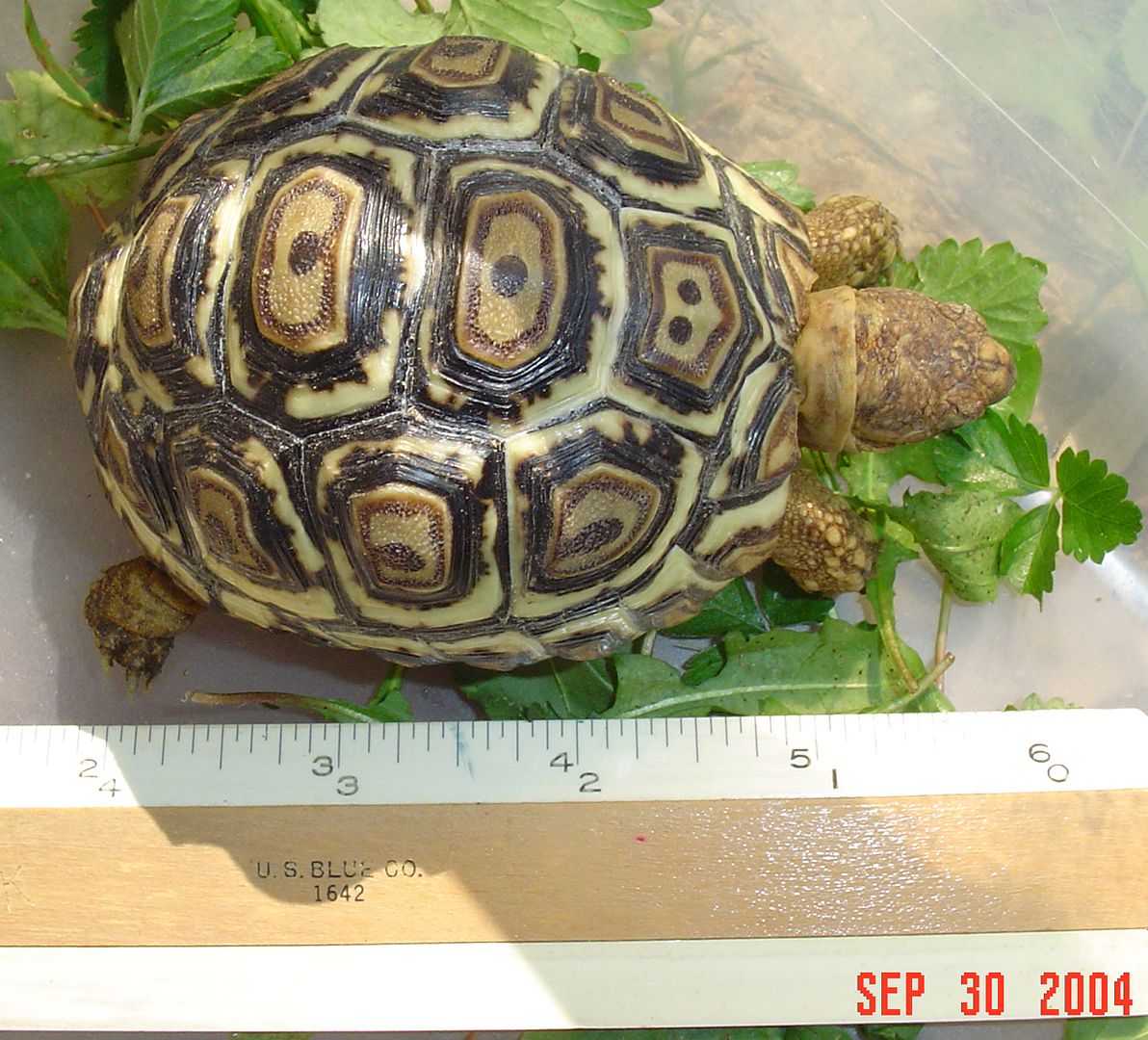
A few pages before my article in the Sept. '06 Reptiles magazine - Jon Coote wrote about 'pyramiding' also! He was/is with a major tortoise nutrition manufacturer.. among other things. He mentioned how it has been a "slow-to-accept" concept for him also.
But to answer your Q? Terry O - I decided when I got my very first redfoot hatchling.. in Feb. '05.. that I would simply raise them totally opposite of how I described I kept the '98 hatchlings. I began to "mist-them-til-they-drip" and haven't stopped! Luck?, Coincidence? or Fate?.. there you have it.
Are they healthier since I've 'improved' their diet or habitat? - maybe!?
Originally I kept the cypress mulch entirely too wet and that created plastron 'fungus' issues - like Tom and I discussed on the phone and he mentioned on his last post. So their substrate doesn't need to be "wet".
Bottom line - "carapace contact" - with [ substantial ] humidity.. forms/always it to grow SMOOTH! There.. I've said it.
The proof is in our on-going pics.
The following may surprise - hopefully 'enlightens' - many.
It was not that long ago that I also was frustrated, confused and doubtful. I'll do my best to tell my story as complete as possible.. of course with corresponding pics - some are actually "scanned" from prints [ before digital! ]
I agree in part with what Richard stated about "over-doing" the soaks and spraying, etc. I also believe that the odds of getting 'pyramiding' from/after "over-doing" is probly 328,963,1247,047,194,495,491 to 1.
To answer Terry O's Q? -
Terry it was really like your ability to visualize anything pertaining to outdoor landscaping, enclosures, vivariums, etc.! It just comes/came naturally - maybe like that's what we do?
I simply observed the situation/facts/results present.. let them incubate for a short while and the 'conclusion' hatched!
About Redfoots and Leopards.. they don't co-habitate [ make note of DATES in lower right of some of the pics.. from the first camera that was set to embed them for this very reason apparently ]
Look who's coming to dinner! Romaine/Kale? [ it gets worse............ ]


The redfoots were '98 CH that grew up quite bumpy -


Shown above at various sizes.. they were raised-up during very warm/humid seasons together outside -

Don't tell me about how you guys have done it wrong!
The Redfoots were fed no fruit or protein.. kept dry inside on hay for the Leopards and never "misted"!
The Leopards were subjected to high humidity here in TN.
They were all very small when housed together.. 4" CH redfoots and 4" WC leopards ------- YIKES!!!!!
I saw 'bumpy' Flat-tails ( a spider ssp. ) at the ZOO -

They saw remarkable results after providing "humid-hides" for their hatchlings!
I have "Mediterranean" breeder friends face the same dilemma, etc. Same results.
And I did speak with Richard Fife on the phone.. in early '03 maybe { not sure } I think I was asking him about sexing the Leopards.. and we may or may not have discussed redfoots at that time.
No humid hide for these guys -

It only took a few months..

A few pages before my article in the Sept. '06 Reptiles magazine - Jon Coote wrote about 'pyramiding' also! He was/is with a major tortoise nutrition manufacturer.. among other things. He mentioned how it has been a "slow-to-accept" concept for him also.
But to answer your Q? Terry O - I decided when I got my very first redfoot hatchling.. in Feb. '05.. that I would simply raise them totally opposite of how I described I kept the '98 hatchlings. I began to "mist-them-til-they-drip" and haven't stopped! Luck?, Coincidence? or Fate?.. there you have it.
Are they healthier since I've 'improved' their diet or habitat? - maybe!?
Originally I kept the cypress mulch entirely too wet and that created plastron 'fungus' issues - like Tom and I discussed on the phone and he mentioned on his last post. So their substrate doesn't need to be "wet".
Bottom line - "carapace contact" - with [ substantial ] humidity.. forms/always it to grow SMOOTH! There.. I've said it.
The proof is in our on-going pics.


